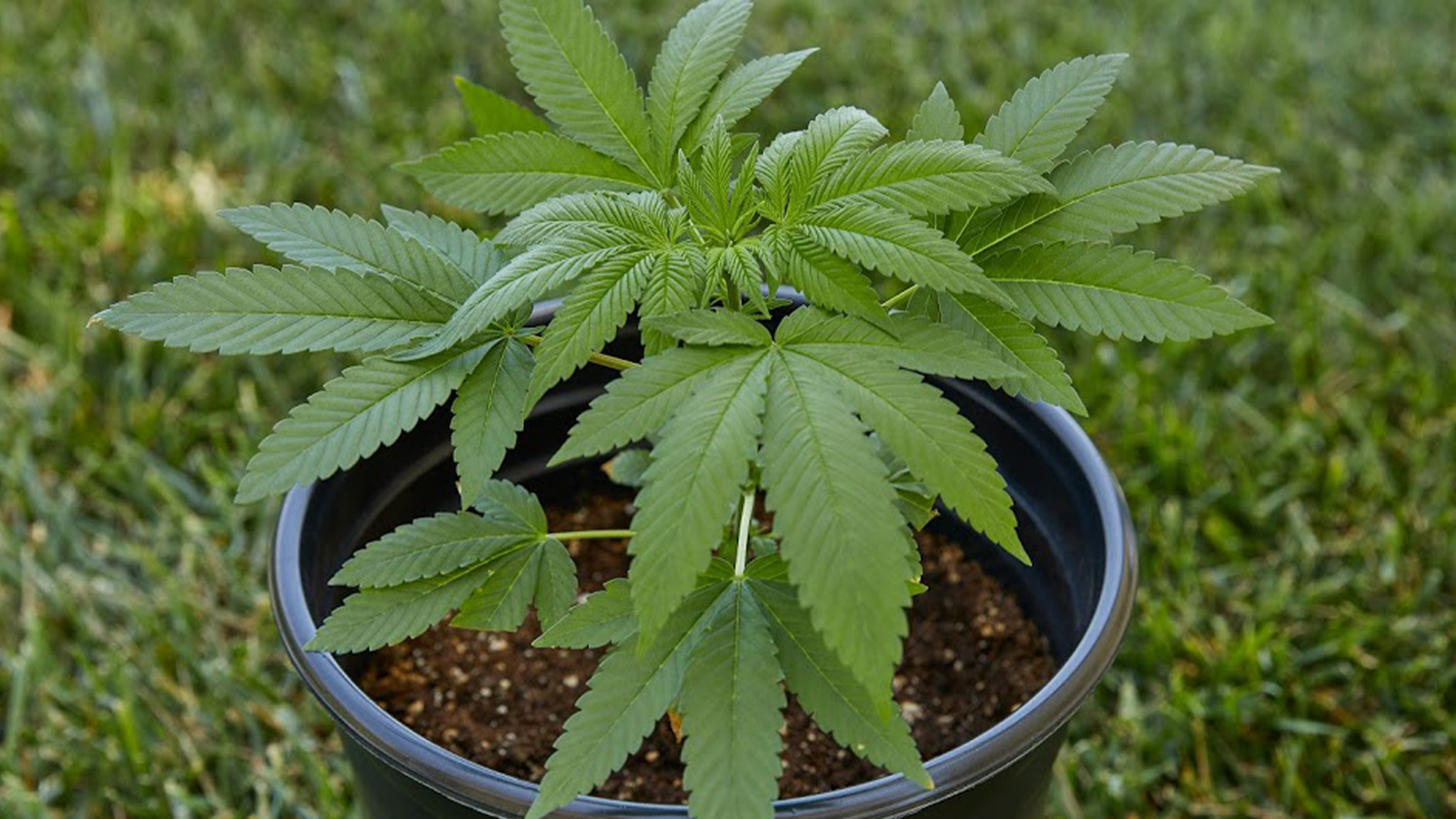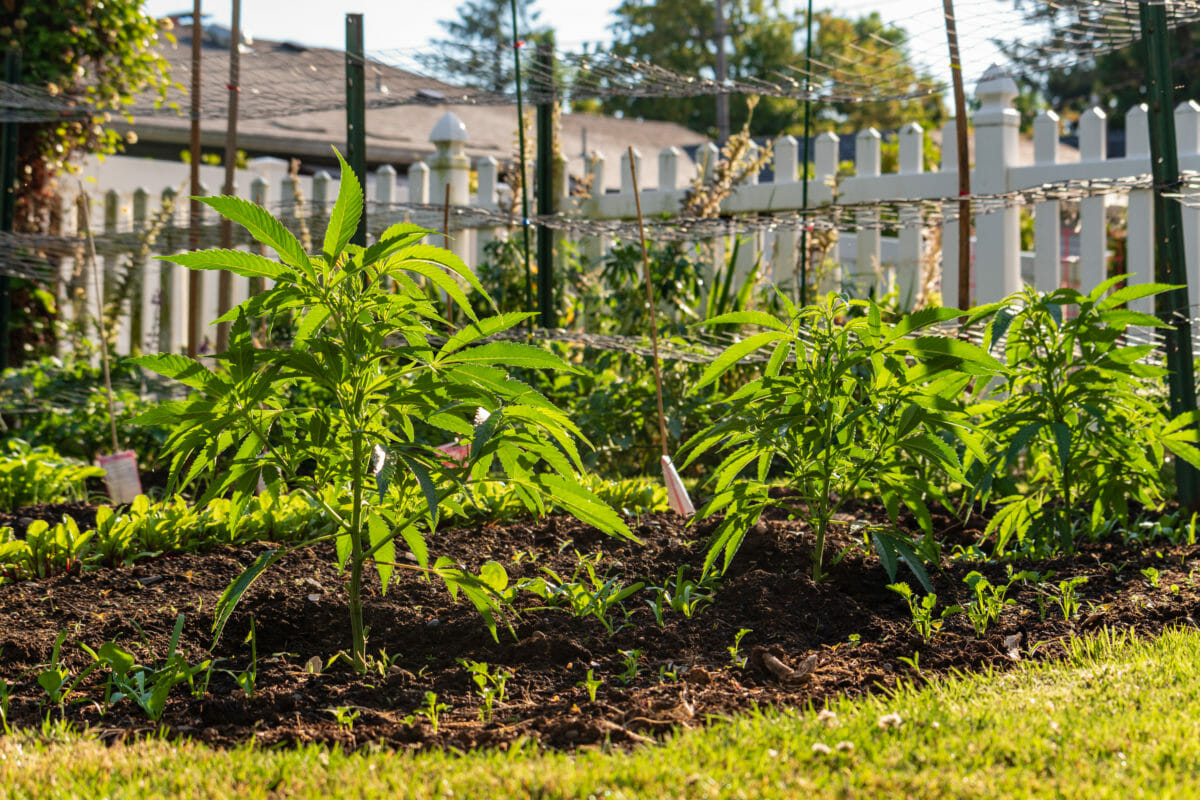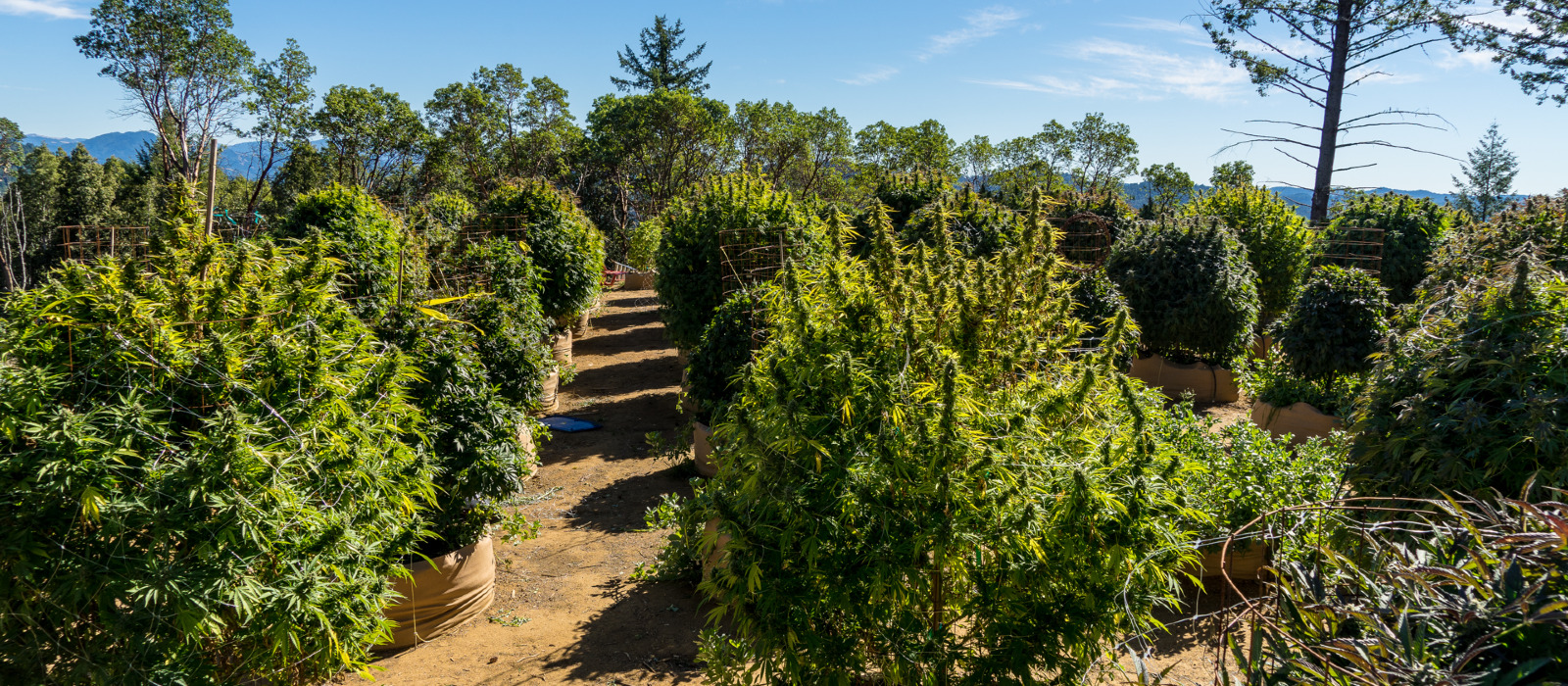Growing Cannabis Outdoors
Growing cannabis outdoors obviates many of the frustrations faced by cultivators and offers a more natural, organic approach to growing. An abundance of free resources are available with the sun providing up to 16 hours of light for the plants and fresh air supplying vital nutrients. Organic soil is key to achieving high yield and quality harvests when growing cannabis outdoors, as the soil provides vital micronutrients and minerals.
Benefits Of Growing Outdoors
Growing your plants outdoors offers several unique benefits compared to growing them indoors. The most obvious benefit is that plants grown outdoors have access to more space, allowing them to become larger and fuller than those grown in a restricted indoor environment.
Furthermore, they are not reliant on you to water them as they can access free rainwater which helps hydrate the roots of your plants. Additionally, sunshine creates a cheap alternative source of light for your plants as opposed to LED lighting or other forms of artificial lighting that would be required for indoor growing. Being outdoors also ensures that ventilation will help keep air quality high and minimize the risk of mold or fungal growth phase.
Companion planting provides another advantage when it comes to outdoor growing as certain plants can help protect one another from pests or increase the nutrient profile for other neighboring plants, this would otherwise be impossible with indoor growing which requires isolation between different species.
Beneficial insects may also frequent an outdoor setting, further augmenting their pest control capabilities whilst assisting in pollination at the same time. Rich soil full of native microbes will facilitate a healthy root growth phase and allow your plants’ stems to strengthen and grow more robustly over time, providing better stability even in windy conditions.
Choosing Location

When choosing a location for outdoor growing, it is important to consider the climatic conditions that are necessary for successful cultivation. In Europe in 2021, suitable temperatures should never drop below 12°C or exceed 30°C.
Allowing adequate access to sunshine is also paramount, with a minimum of 6-8 hours of direct sunlight during peak season. A south-facing location is recommended for optimal energy levels and photosynthesis, however western and eastern exposures still provide ample light exposure under the right circumstances.
Lastly, shelter from torrential rain and heatwaves needs to be provided either in the form of temporary tarpaulin coverage or through a proper greenhouse structure.
Growing Locations
Growing cannabis on a balcony is an increasingly popular method for those living in cramped spaces, high-rise apartments, or other areas with limited outdoor space. With the right tools and knowledge, anyone can become an urban gardener capable of cultivating a healthy and plentiful harvest of weeds.
The biggest advantage of growing on a balcony is the exposure to fresh air and natural sunlight that plants need to thrive. However, north-facing balconies will not receive as much light as south-facing ones which may impact harvest size.
Factors To Consider When Choosing a Growing Spot
When choosing a growing spot for cannabis cultivation, there are a few factors to consider. Firstly, plants need water to survive. In outdoor gardens, rain is the primary source of water and can be supplemented by manual watering during periods of extended drought.
While this may be sufficient for small areas, larger-scale cultivators will have difficulty watering an entire garden or greenhouse each day. To mitigate time commitments, it can be beneficial to set up an irrigation system that reduces the daily effort and ensures your plants are getting enough moisture.
Genetics

Genetics plays an important role when selecting which strain of cannabis to grow. Each strain has its own advantages and potential, depending on the intended use and growing environment. For example, if a person lives further north, where the season is shorter, then a strain with hardy and fast-flowering genetics like autoflowers would be more suitable for those conditions.
On the other hand, those living in more temperate regions should consider sativas that tend to grow longer and much taller— hybrids are often ideal for these areas as they will adapt to any outdoor climate.
Germination
Germination is the start of a cannabis plant’s life cycle and is an essential step in the growing process. In its simplest form, germination is when a seed begins to sprout and grow. It requires three key elements; moisture, darkness, and humidity to activate the seedling so it can emerge into a healthy plant.
The right amount of moisture helps soften the seed casing and activates the seed’s natural growth hormone, allowing it to produce its first tap root.
The darkness allows the young plant to grow undisturbed without worrying about outside temperatures. Finally, humidity helps create a moist environment that mimics what they would naturally encounter under the soil.
Growers can start their plants directly in soil or in pots if they are located in warmer climates. Soil provides an ideal setting for cannabis germination as it contains most of the necessary components for optimal growth, such as nutrients and microbes which aid with nutrient absorption.
However, some cannabis growers also choose other materials such as rockwool or specialty propagation media which provide scaffolding for roots to easily spread out and access air pockets (which help them further expand).
Check out this article: How Big Should My Plants Be After 2 months?
Maintaining The Plant
The vegetative phase is one of the most important stages in a plant’s life. During this time, photosynthesis occurs so that the plants can create energy to fuel its growth and development. The noticeable sign of this stage is an abundant production of large fan leaves which will spread throughout your plants. To ensure proper growth, it’s important to maintain the plants by implementing efficient management practices.
When it comes to watering your plants, the best rule of thumb is to wait until the top 3-5 centimeters of soil has become dry before reapplying water. Doing this allows for enough moisture in the soil for the plants to grow but not too much that can cause root rot or other unwanted consequences.
However, if you find that your seedlings are wilting despite having freshly moistened soil, then overwatering may be a problem and too much drainage might be necessary. Otherwise, following these guidelines can help ensure that your plants stay healthy and continue growing in their vegetative stage.
A Word on Watering

Watering your outdoor plants is an essential part of taking proper care of them. Although it seems intuitive, it’s important to remember that too much or too little water can damage your plants. The best way to gauge when you need to water is when the top inch of soil becomes completely dry.
Watering at this time will provide enough moisture for your outdoor cannabis plants without making their environment overly wet, which could cause root rot.
If you plan on taking a vacation during the growing season, you can set up an automated watering system that fits your plants’ needs. This way, the soil will always be maintained at a healthy level, even if you aren’t around.
Preventing Pests
Managing and preventing pests is often one of the main challenges for outdoor growers. Fortunately, there are some effective steps that can be taken in order to ensure your plants are safe and healthy.
Predatory insects such as ladybirds and parasitic wasps can usually be found in most areas, making them a great way to protect your marijuana plants from other pest species. Companion planting strategies can also prove to be useful—plants like basil, lemon balm, or dill have natural elements that serve as an effective repellent against invasive pests like certain types of caterpillars.
Another useful tactic is to use beneficial fungi such as mycorrhizal fungi which help capture and kill nematodes—otherwise known as soil microorganisms that attack cannabis roots. As a physical barrier option, consider installing chicken wire fences or other sturdy barriers to protect your crop from larger animals like deer and birds who are likely to munch away at foliage if given the chance.
Check out this article: The Most Pest Resistant Cannabis Strains.
Protect Against Pollination
As a cannabis cultivator or backyard farmer, pollination of your crops is one of the worst things that can happen to your harvest. This natural process occurs when male and female plants are brought into contact with each other, causing fertilization and the production of marijuana seeds in flowers.
If pollen makes its way onto female buds, the resulting product will be smaller, more seed-filled buds that have significantly less potency. To protect against this problem, experienced growers must take active measures to ensure male plants don’t end up in the growing space.
One great tool for protecting against pollination is to identify sexed cannabis seeds if you’re growing from seed. By doing this you can guarantee that no male plants end up in your garden and mix with the female plants pushing them into their flowering stage.
Read More: Microdosing THC Explained
Choosing Soil And Other Media For Outdoor Cannabis Growing

When it comes to outdoor cannabis growing, soil is at the foundation of your grow operations. It’s essential to choose quality soil that has properties suited to the needs of your healthy cannabis plants. A good starting point is looking for soil that is rich in organic matter for optimal nutrient uptake and healthy root growth. Furthermore, it’s also essential that the growing medium allows for proper drainage so your weed doesn’t become waterlogged.
Silt Soils
Silt soil is a highly sought-after medium for gardening and agriculture, thanks to its unique characteristics. Its granular size falls between sand and clay particles, meaning it has balanced drainage, nutrient availability, and moisture retention.
Silty soils are much easier to work with than clay-rich soils and warm up quickly in the spring like sandy soils do. The best silty soil is a dark and crumbly loam; it’s naturally rich in fertility and prefers not to be amended beyond being initially tilled at the start of the season. It also offers good aeration for plants rooted in it due to its light texture.
Sandy Soils
Sandy soil has many desirable qualities, making it a popular choice for gardeners. It is easy to work, as the fine granular size allows for good drainage, and it warms quickly in the sun. This type of soil also tends not to become compacted over time, allowing air to circulate freely through it.
One of its main drawbacks is that it does not hold nutrients well, especially during wet weather. To improve this issue, farmers and gardeners may need to dig deeper planting holes and add organic matter such as compost, peat moss, or coco coir to help bind the soil together.
In hot climates like tropical areas with sandy soils, mulching can be a beneficial practice as it helps retain water and prevents roots from getting too hot.
Clay Soils
Clay soils can be problematic for gardeners because it is slow draining and does not hold oxygen well. The best way to amend this soil is to start some weeks in advance of planting.
To do this, dig large holes in the locations where you need to place plants and mix them in compost, manure, worm castings, or other decomposed organic matter. This will provide much-needed aeration and drainage while also providing essential nutrients.
Loam Soils
Loam soils are known to be the best for the cannabis growth cycle. They combine the three main types of soil consisting of sand, silt, and clay in order to create a rich, aerated environment that promotes healthy root systems and extremely potent yields.
It’s important to understand how these three soil types interact with one another as there can be a difference between successful loam soil and failing loam soil. The easiest way to identify loamy soil is just by touch. Sandy soils should feel difficult to compact, while clay should form into a tight ball when compressed and not easily break apart.
Read More: Can You Smoke Shrooms
Final Thoughts
Growing cannabis outdoors can be a rewarding experience. Not only will you get to enjoy the fruits of your labor, but you’ll also have the satisfaction of growing something with your own hands. When done correctly, you can grow large, healthy plants that will produce high-quality buds.
The key to successful outdoor cannabis cultivation is understanding the climate and weather in your area, as well as providing adequate nutrients and water to the plants. Additionally, make sure to use appropriate pest control methods and provide adequate space between plants so they don’t compete for resources. With some patience and knowledge, you too can enjoy big, beautiful cannabis plants outdoors!



